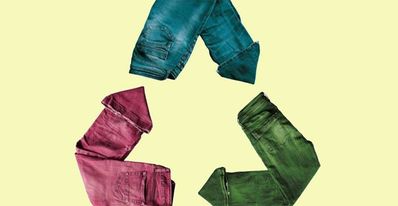The fashion industry is one of the biggest in terms of profits. However, it also has some of the worst practices for ethical and environmental concerns.
But what is sustainable fashion anyway? This is the fashion that overcomes some of the most devastating problems of the fashion industry.
This article will discuss the biggest issues plaguing this industry today.
Contents
An Overview of What We Mean by “Ethical”?
Ethics are moral principles that govern a person’s behavior or decisions regarding fairness and rightness between people, organizations, communities, societies, and nations. In short, they’re about how to behave morally as a human being on planet earth.
The Biggest Issues in the Fashion Industry
The fashion industry is one of the most controversial, with many ethical issues. One of the biggest issues in the fashion industry stems from fast-fashion companies.
Fast fashion
Fast fashion has created a never-ending cycle that creates cheap clothing that ends up being thrown out before it can be worn or laundered. When clothes are produced cheaply they are made to wear out quickly, meaning they end up only lasting for about six months before falling apart and needing to be replaced by newer clothes.
The production process also entails heavy use of water and toxic chemicals which create pollution as well as damaging our environment.
Child labor & low wages
The second issue deals with child labor where children under 13 years old work long hours on dangerous machines for low wages in order to help provide their families with an income. This puts children at risk of injury and death. There is also a high percentage of underage workers who work in sweatshops, where they are paid very low wages for long hours under the supervision of an adult which causes them to miss school often.
Animal cruelty
The third issue deals with animal cruelty within the fashion industry as well as using real fur that is obtained by killing the animal. The fur industry is known for its cruelty towards animals as they are often skinned alive in order to keep their hair intact, which happens to be a fashion trend now. Animals also die due to over-breeding and being forced into small cages where it’s difficult or impossible for them to move without crawling over each other, which can cause them to die of suffocation.
Toxic chemicals
The fourth issue with the fashion industry is that it often uses hazardous chemicals in order to create clothes and many people are unaware of this fact or how dangerous these chemicals are for both themselves as well as animals around us.
The most popular materials used by clothing companies include nylon, polyester, acrylic, and spandex. These materials release cancer-causing chemicals into the air when they are heated by clothes dryers or irons which increases the risk of cancer in people who work around it on a daily basis as well as their families.
Animal skin leather
The last issue with fashion is that many pieces are made from animal skins such as leather and fur that were obtained in a cruel way. This is an issue because they can be made from endangered species such as tigers, elephants, and whales which threatens the extinction of these animals.
What Can We Do?
In order to be ethical in business practices, one must consider social responsibility as well as environmental sustainability. The first step towards becoming more sustainable is understanding the current state of affairs within your own company – starting with your supply chain.
The supply chain is the route that raw materials take from becoming a finished product to being available for purchase in stores. A company can’t be sustainable if its own policies aren’t ethical, and it’s impossible to make ethical decisions when you don’t know where your products come from or how they’re made (and by whom, for what wages they’re paid, etc.).
The next step is to stop working with suppliers that aren’t sustainable or ethical. If your company already has a system in place to review and monitor existing supply chains so you can make informed decisions about who deserves the business of manufacturing your goods, then great work!
In addition to ensuring the ethical treatment of workers in the supply chain, another way to be more sustainable is by decreasing quantity and increasing quality. For example, buying less but choosing high-quality products that will last longer will decrease your environmental impact through lower product turnover (i.e., having to produce new products all the time).
If you choose not only to reduce quantity but also to support suppliers that follow high ethical standards, you can feel good about your business decisions.
There are a variety of resources available for companies who want to become more sustainable and ethically conscious in their practices: from Fair Trade USA, the Sustainable Apparel Coalition, Pedro Clavero and Fashion Revolution, among others. You don’t have to be a large corporation to make positive changes – every little bit counts!
Conclusion
This article has explored some of the biggest ethical issues in the fashion industry and how to deal with them. It’s important that we’re all mindful about where our clothes come from, but it can be difficult to know what companies are making sustainable fashion choices without doing a lot of research.
A few ways you can minimize your environmental impact are by buying fewer things, only purchasing second-hand clothing when possible, and recycling or donating unneeded items rather than throwing them away.




